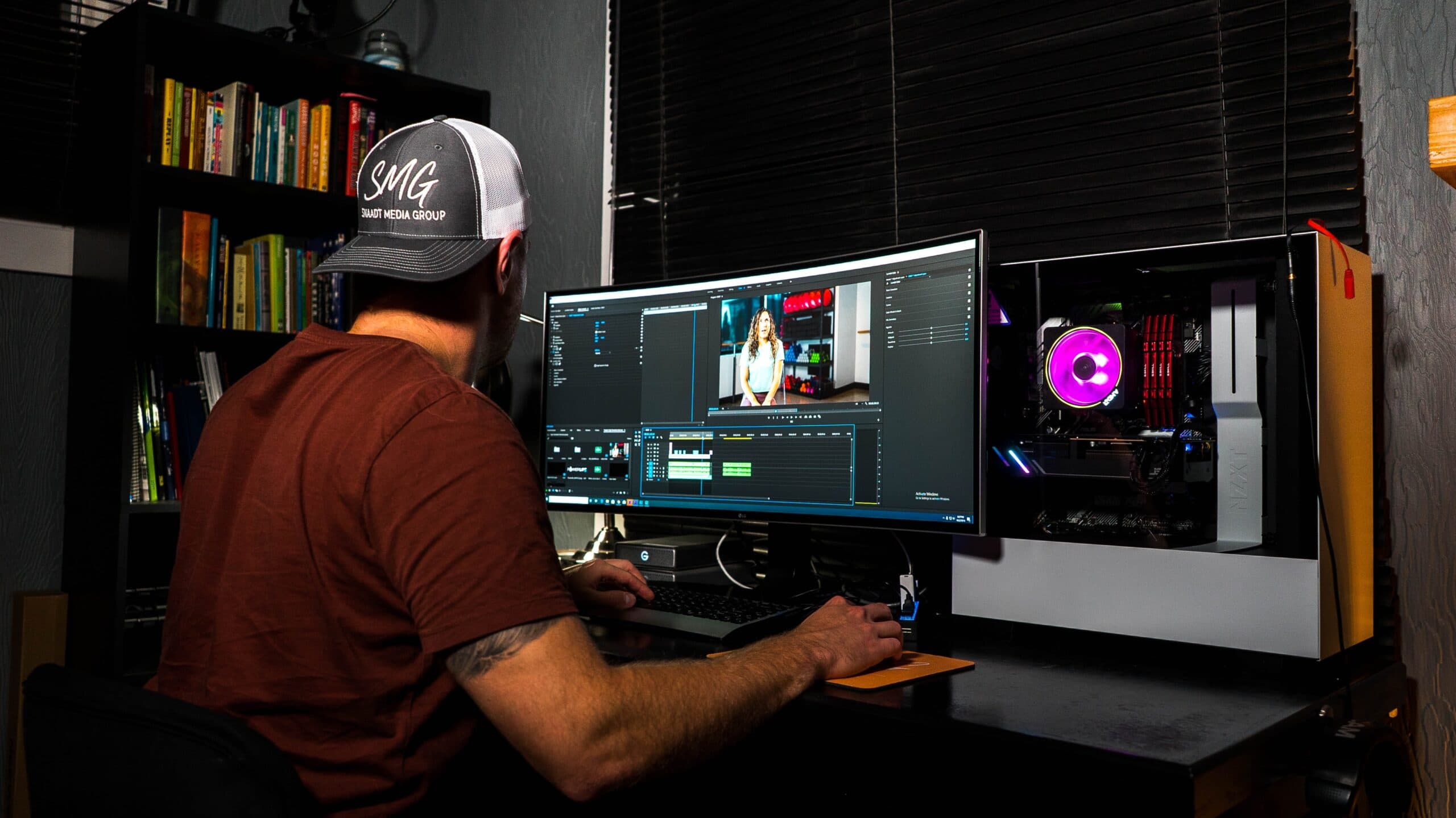While Adobe Premiere Pro is a mass favorite, another common consensus is that Premiere Pro can be pretty laggy and sluggish.
This lag could be due to a multitude of factors. Excessive usage of RAM. The complexity of your video clips and the kind of effects you’re using could slow you down. The resolution and format you want to render also factor into the speed at which Premiere Pro runs. A great practice before following the steps listed below is to check if your system matches Adobe Premiere Pro’s recommended system requirements. Another great idea that requires zero research is using Premiere Pro on Postudio. All the amazing features and none of the lag!
Contents
How To Make Adobe Premiere Pro Run Faster
We’ve managed to research and compile a set of 8 steps you can follow to hopefully speed up your Adobe Premiere Pro.
Step #1: Clear Media Cache
Premiere Pro creates cache versions of the media you import. This is done automatically to make it easier for Adobe Premiere Pro to access your media while editing.
These cache versions can quickly add up and occupy a lot of space on your system. Probably slowing down your entire system.
It’s pretty easy to delete your media cache. Select the Premiere Pro Tab and click on Preferences. In the Preferences, drop-down find and select Media Cache. This opens your Media Cache Preference window. Click Delete next to the Remove Media Cache Files. Confirm your choice when prompted.

Deleting your media cache should improve your speed.
Step #2: Transfer your Media Cache to a Secondary Location
Your OS drive is where your Media Cache files are kept by default. This is functional but not performance-optimal because your OS drive should be devoted to giving your OS and applications their optimum read/write performance.
Move your Cache to a different disc rather than allocating these priceless resources to your OS drive. The cache drive should be as quick as possible. Use an SSD or, even better, an M.2 SSD. If you must utilize a spinning disc drive, at the very least, use one with a 7200rpm speed.
Step #3: Enable GPU Acceleration
Make that GPU Acceleration is selected for the Renderer under Project Settings. If the GPU Acceleration option is greyed out, your graphics card drivers might need to be updated. Premiere Pro may not work with your graphics card if you upgrade them but the choice remains greyed out.
Step #4: Decrease Playback Resolution
If your project is frequently lagging or skipping, consider changing the playback resolution from “Full” to “1/2” or “1/4”. This will only lower the preview resolution to enhance performance; it won’t change the project’s final resolution.

Additionally, you can make sure High-Quality Playback is turned off. Make sure High-Quality Playback is unchecked by clicking the Wrench symbol directly next to the Resolution setting.
Step #5: Disable Tracks when not in use
Disable any media tracks that aren’t being used immediately to save space and boost performance.
Simply right-click or Ctrl+click on the track or clip you wish to disable, and then uncheck the “Enable” box in the dropdown menu. Later, you can always turn it back on.
Step #6: Sync your Sequence and Clip Settings
Always make sure to establish a sequence in your project with the same settings as your clips.
Usually, Premiere will ask you if you want to adjust your sequence settings so that your clip matches them when you drag a clip to the timeline and it doesn’t match the sequence settings. This will help you save a tonne of time when rendering images and speed up your editing process.
Step #7: Use Proxies
Another method that will improve playback in Premiere Pro is using proxy files when editing. When you use proxy files, you essentially edit in a lower-resolution version of your film. When it’s time to render, it will then switch back to your high-resolution film.
Step #8: Check for Updates
Check for operating system and graphics card updates if the current version of Premiere Pro suddenly becomes sluggish. Also, ensure that you check if there are updates to your Premiere Pro as well.
While this is a sound suggestion to speed up your Premiere Pro performance. We also strongly hope that you don’t update any of the three when you’re in the middle of a project.
Conclusion
A laggy Premiere Pro is going to be a thing of the past with you following these 8 steps. Postudio is the solution you’re looking for when your tool is running slow. We’ve got all the best post-production tools you need at the click of a button. All you need is a browser and a good internet connection.









